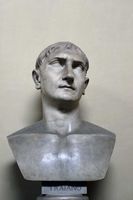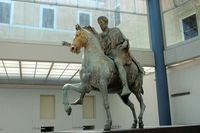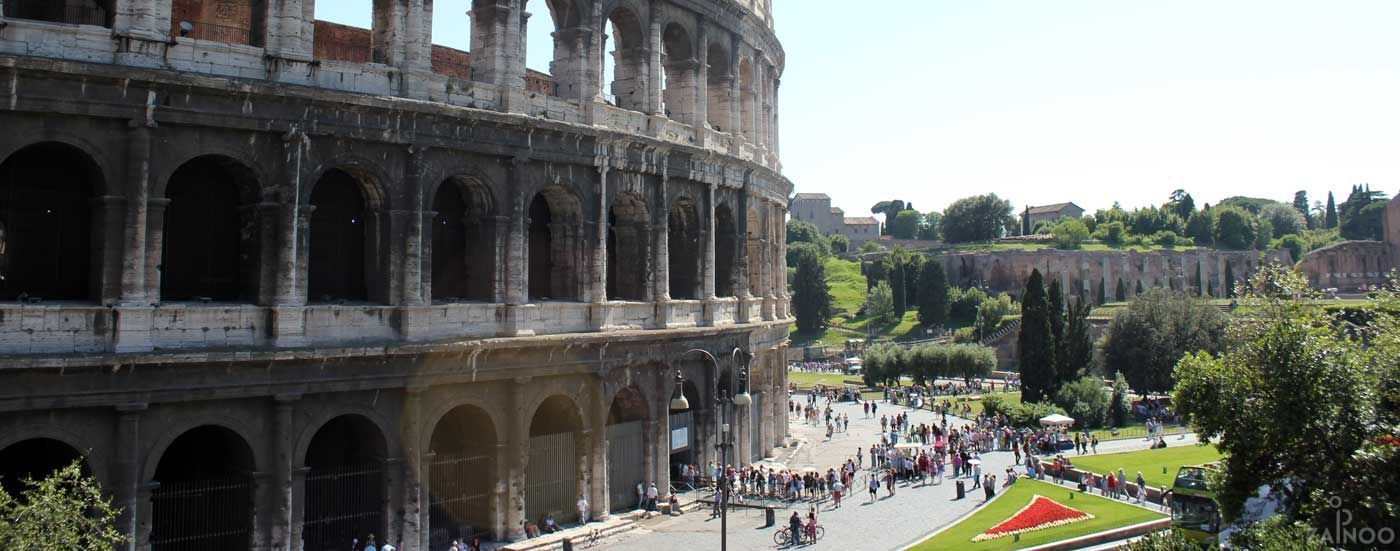Roman imperial period
From Augustus to the fall of Rome
Caesar's adopted son Octavian became Augustus, the Exalted, the first emperor of the Roman Empire. Years of relative prosperity and economic flowering were followed by turbulent years under the successor emperors. Among the adoptive emperors Trajan and Hadrian, the Roman Empire reached its greatest extent in the 2nd Century. The soldier-emperors in the 3rd Century initiated then the slow fall of Rome. Christianity became the state religion and the empire was divided into a western and an eastern half. Western Rome eventually felt in 476 to the Germanic Odoacer and the glorious Roman Empire broke apart.
Julio-Claudian emperors and Flavians
After the assassination of Julius Caesar, his adopted son Octavian (Augustus) seized power in Rome after 17 years of civil war. He restructured the administration and under his rule Rome experienced a prosperous heyday. Under his successors, Tiberius, Caligula, Claudius and Nero the empire experienced a very autocratic conversion – from then on egocentric autocrats ruled in Rome. Nevertheless, under these Julio-Claudian emperors and among the Flavian emperors Vespasian and Domitian many of today's most famous Roman monuments such as the Colosseum, the Arch of Titus and the imperial residence were created. In A.D. 67, the two apostles Peter and Paul were killed due to the persecution of Christians in Rome. In A.D. 95 the enraged nobility killed the Emperor Domitian and appointed their own emperor Nerva to the throne, who ruled until A.D. 98.
Adoptive emperors and soldier emperors
These troubled times were followed by a peaceful and tranquil era of enlightened emperors. The so-called adoptive emperors Trajan, Hadrian, Antoninus Pius and Marcus Aurelius were selected after the appropriate training, adopted and crowned as emperor. Under the Emperor Trajan, the Roman Empire reached its greatest extent while the Emperor Hadrian was the first to take care of consolidating and strengthening the existing empire. Constant unrest at the borders and the increasing power of the military resulted in further difficulties in the 3rd Century. The army recognized its influence and declared from then on its own reigning emperor. From the time of the soldier-emperors to A.D. 287 hardly an emperor lived longer than 2 years and usually didn’t die a natural death. Christian persecution, civil unrest and threat of external borders were commonplace in Rome. During this time, the Aurelian Walls around Rome were built.
The Emperor Constantine and the downfall of Rome
The division of Rome into two administrative districts finally brought the necessary relaxation of the situation. The Emperor Constantine granted Christians finally freedom of religion in the Edict of Milan and moved the capital of the Roman Empire in 330 to Byzantium, which was now called Constantinople. With the elevation of Christianity as the state religion in 391 by the Emperor Theodosius, the Bishop of Rome as the successor of the Apostle Peter won the supremacy of Rome, and thus in the Western Roman Empire. But the empire was already crumbling at its external borders. In 410, the Visigoths under Alaric plundered Rome, in 455 the Vandals under Geiserich and in 479, the last Roman Emperor, Romulus Augustus, was overthrown by the Germanic Odoacer. The Pope in Rome ruled from now on as a city lord.




Tweet